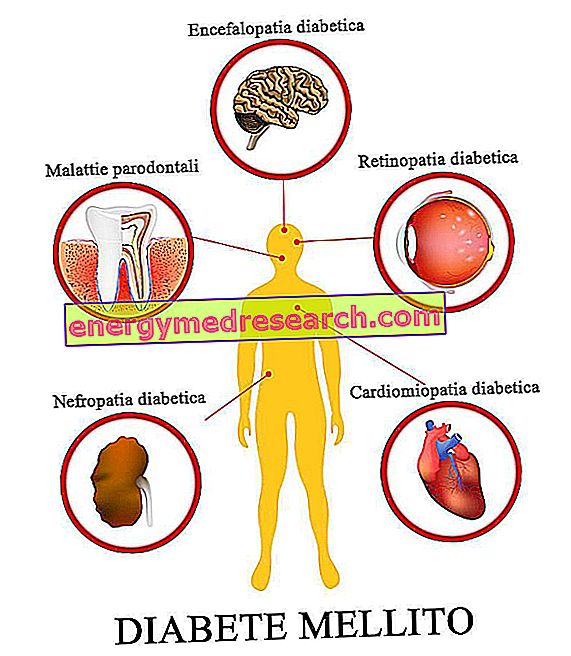Choice of toothbrush
Choosing a toothbrush is extremely important: there is no right or wrong toothbrush ... what matters is choosing it according to one's needs, the state of health of the teeth and, of course, also one's own tastes.

Even its size is important: an ideal toothbrush should be small enough to reach all tooth surfaces.
Before proceeding with the description, it is important to briefly dwell on the structural characteristics of a toothbrush. This important dental cleaning tool consists of:
- HEAD: the upper part equipped with cleaning bristles
- HANDLE: the handle of the toothbrush
Toothbrush head
Let's get to the point: what are the criteria for choosing the right toothbrush?
- Choice of toothbrush head : to facilitate tooth cleaning, the head of a toothbrush should be rather small: approximately, the size of the head should not exceed 2.5 cm in length and there should be no more than 4 tufts of bristles in width. Another important feature is the shape of the toothbrush head, which should be rounded and not have corners to avoid traumatizing gums and palate. Not to forget, then, that the brush head should not have cracks in the area where the tufts of bristles are attached: this is to prevent bacteria from nesting between the bristles. As mentioned, some toothbrushes are equipped with a special tongue cleaner behind the head; others, however, are equipped with special rubber or latex fins on the sides of the head, whose function is to massage the gum during tooth brushing.
Some toothbrushes are equipped with a flexible head, to ensure more effective cleaning (especially in the tongue and palate area). The flexible head favors the perfect adaptation of the brush bristles even on the jagged surface of the molars.
- Choice of toothbrush bristles :
NATURAL AND SYNTHETIC BRISTLES
It is a good rule to avoid the use of brushes with natural bristles: these, in fact, not only risk damaging the gums, but also retain the bacteria inside them, thus increasing the chances of developing caries. A toothbrush with artificial bristles should therefore be preferred, which can effectively improve cleaning and facilitate brushing. The table shows schematically the advantages and disadvantages of natural and synthetic bristles.
Why avoid a natural bristle toothbrush Why prefer a brush with synthetic bristles - Natural bristles tend to break off and take off easily
- They keep bacteria inside them more easily
- They consist of organic material which, in contact with water, tends to ferment and rot
- The bristles remain wet
- They are very irregular and of different diameters
- The tip is not rounded but jagged
- Being hollow, the natural bristles retain the food residues inside them, thus feeding the development of bacteria
- Artificial bristles do not break easily
- They are firmly inserted in the brush head
- The diameter of the artificial bristles is uniform
- They can be rounded at the tip (essential feature to avoid scratching the tooth enamel)
- They are not quarries → they do not collect bacteria or food residues inside them
- They do not absorb water
- They dry quickly
HARDNESS OF BRUSHES BRUSHES
Particularly suitable are the brushes equipped with heads formed by distinct tufts of bristles with rounded tips. " Medium toothbrush " means a toothbrush with medium bristles (diameter of synthetic fibers between 0.2 and 0.25 mm): in general, medium bristles are the most requested in the market. Do not forget, however, that the soft bristles, able to brush teeth like feathers, are particularly suitable in case of dentinal hypersensitivity. The delicacy of the soft bristles reduces the risk of damaging the tooth enamel and irritating the gums. Hard bristle toothbrushes, on the other hand, are particularly resistant and tough in brushing and are not suitable for all types of teeth. It is strongly recommended to avoid using these toothbrushes in case of gingivitis, gum retractions and sensitive teeth.
Today, on the market, there are many types of heads: the arrangement of the bristle tufts can be such as to form a uniform, corrugated, domed or multi-level cleaning plane. Each person can choose the toothbrush that best suits their needs or personal tastes.
- Choice of toothbrush handle: even the toothbrush handle is very important to simplify dental cleaning. There are some "non-slip" models, indicated to facilitate the gripping of the instrument and to prevent the brush, "slipping" from the hands during brushing, to hit the gums. The handle of the toothbrush is generally made of plastic, an important feature to guarantee its impermeability against humidity. The handle can be straight or slightly curved, in order to facilitate support for the thumb or to encourage deeper tooth cleaning. Particularly large or curved handles can be helpful for those affected by some form of disability.
- The shape and colors of the toothbrush can be chosen according to your needs.
Ideal toothbrush
An ideal toothbrush should have the following characteristics:- Suitable for the needs of each person in terms of shape, size and structure
- Excellent functional properties: effective in removing food residues and plaque from the surface of the teeth and from the interdental spaces, easy to slide, easy to handle
- Delicate for gums
- Durable and low cost
- Short head with numerous tufts of synthetic bristles with rounded tips
- Comfortable and non-slip handle
- It should not contain latex (ideal feature to allow latex allergies to use a toothbrush)
- Odorless
- Tasteless



